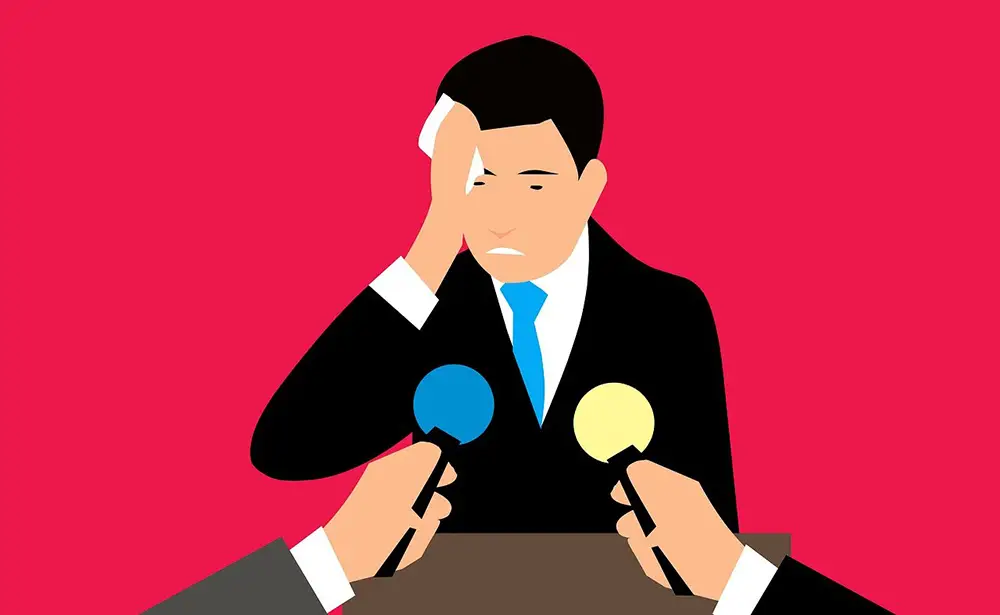There are a lot of misunderstandings concerning stuttering, especially when it comes to its causes and treatment.
In order to shed some light on this speech disorder, here are 20 facts about stuttering you need to know.

1. What is stuttering?
Stuttering is a speech disorder characterized by repetition of sounds, syllables, or words; prolongation of sounds; and interruptions in speech known as blocks. Stuttering is also referred to as stammering.
2. International Stuttering Awareness Day
October 22 was designated the International Stuttering Awareness Day. The best way to celebrate it is to read up on some talented and influential individuals who have had to deal with a stutter, and how much work they did to overcome it. You can also consider making a donation to the International Stuttering Association to improve the lives of those who can’t afford treatment.
3. Some stuttering statistics
More than 70 million people worldwide stutter, which is about 1% of the world population. In the United States, that’s over 3 million Americans who stutter. and prevalence is similar in all social classes.
4. The causes of stuttering
The roots of stuttering have been attributed to a number of causes: genetics (approximately 60% of stutterers have a family member who also stutters), child development (children with other speech and language problems or developmental delays are more likely to stutter), neurophysiology (recent neurological research has shown that people who stutter process speech and language slightly differently than those who do not stutter), and family dynamics (high expectations and fast-paced lifestyles can contribute to stuttering).
LEARN MORE: 20 Facts About Developmental Language Disorder
5. Stuttering might cause anxiety
Due to the fact that stuttering makes the communication more difficult, anxiety might be triggered. Some studies from 2009 found that stuttering increases the odds of being diagnosed with social anxiety and that 50% of adults who stutter have this mental health condition.
6. On the other hand, anxiety does not cause stuttering
Research shows that stuttering is not a mental health diagnosis, and anxiety, stress, and low self-esteem are not the root cause of stuttering. Rather, they are the result of living with a stigmatized speech problem, which can sometimes make symptoms worse.
7. The symptoms of stuttering
Common signs and symptoms associated with stuttering are: problems starting a word, phrase, or sentence; repeating a sound, word, or syllable; certain speech sounds may be prolonged; and speech may come out in spurts.
8. Approximately 5 percent of all children go through a period of stuttering
It lasts six months or more and it usually happens to ages 2 to 5. Three-quarters of children affected will recover by late childhood, leaving about 1% with a long-term problem. The best prevention tool is early intervention.
9. Men are more likely to stutter
Statistically, stuttering is more common among males, although the reason behind this is not fully understood. Stuttering affects men four times more than it affects women. It has long been suspected that the number of female adults who stutter is significantly lower because they have a higher chance of natural recovery at a young age. Another interesting statistic to acknowledge is that for men who stuttered, 9% of their daughters and 22% of their sons will be stutterers, while for the women who stuttered the risks are higher, as 17% of their daughters and 36% of their sons will be affected.
10. The types of stuttering
There are three types of stuttering: developmental (occurs as children develop their speech and language abilities), neurogenic (caused by signal abnormalities between the brain and nerves or muscles), and psychogenic (originates in the part of the brain that governs thinking and reasoning).

11. How is stuttering diagnosed
Diagnosis is made by speech-language pathologists, who observe the adult or child speak in different types of situations. They will consider a variety of factors, including an analysis of the person’s stuttering behaviors, an evaluation of his or her speech and language abilities, and the impact of stuttering their daily life. When evaluating a young child for stuttering, medical specialists will try to determine if the child is likely to continue the stuttering behavior or outgrow it.
12. There are plenty of celebrities who stutter
Many famous people, such as actors, musicians, writers have dealt with stuttering. For example, Marilyn Monroe stuttered as a child, and then for two years during high school. Later in life, she learned to cope with it by speaking with a breathy tone, which became one of her trademarks. Lewis Carroll, the author of Alice’s Adventures in Wonderland and Through the Looking Glass, wrote his fantasy novels to escape from his life-long stutter.
13. Stuttering treatment
For very young children, early treatment may prevent developmental stuttering from becoming a lifelong problem. Certain strategies can help children learn to improve their speech fluency while developing positive attitudes toward communication. Treatment often involves teaching parents about ways to support their child’s production of fluent speech. Many of the current therapies for teens and adults who stutter focus on helping them learn ways to minimize stuttering when they speak, such as by speaking more slowly, regulating their breathing, or gradually progressing from single-syllable responses to longer words and more complex sentences. Most of these therapies also help address the anxiety a person who stutters may feel in certain speaking situations.
14. Most people who stutter when talking don’t stutter when singing
The reason behind this is probably the fact that music is an activity in which the right side of the brain is used, while language uses the left. Also, in singing, we use our vocal chords, lips, and tongue in a different way than when we talk and there is no time pressure in singing nor is there any communicative pressure.
15. Struggles people who stutter have to deal with
There are a lot of challenges that come along with stuttering and most of them are caused by other people. Most people who stutter have had to deal with micro-aggression, which refers to things others say that seem harmless, but are actually hurtful. Interrupting is one of the most popular examples and it can cause a lot frustration. Giving advice is another action that might seem well-meant and helpful, but that actually does the opposite.
16. Physical signs of stuttering
Although there may not be any physical signs that a person deals with stuttering, in some cases it may be accompanied by rapid eye blinks, facial tics, lip and jaw tremors, clenching fists, as well as tension in the face and upper body. Some of these might show up due to the stress caused by stuttering and not by the stuttering itself.
17. The degree of stuttering varies from one person to another
No one stutters in the same way. Some people who stutter have more natural control over their speech than others do. The degree of stuttering will also vary within the individual. How much control they have will depend on the particular situation in which they find themselves, the difficulty of the words they must say, and how they feel, in general, in that moment.
18. The classification of stuttering by degrees
Depending on the number of stuttered and non-stuttered syllables, stuttering is classified in several categories: mild (below 5% of syllables stuttered), mild to moderate (5 to 10%), moderate (10 to 15%), moderate to severe (15 to 20%), and severe (above 20% of syllables stuttered).
19. Stuttering in bilinguals
Bilinguals stutter in both, or all of the languages they can speak. If stuttering only occurs in one language, it is probably an exception and is related to a significant imbalance in proficiency in each language. There is still a debate as to whether stuttering manifests itself similarly or differently in both languages. However, it’s more likely that stuttering occurs “differently” across languages. Some people have shown a difference in stuttering frequency across languages, but not the location of the stutters, while others have shown a difference in stuttering frequency, type, and location across the two languages.
20. The brain’s in-depth structure and activity during speech
Experts can spot some differences in the brain area between people who stutter and people who don’t while they’re talking. People who stutter often appear to have slightly weaker connections between the brain areas responsible for hearing and for the movements that generate speech.
Stuttering does not determine a person’s abilities or his/her future and each person who has been diagnosed with it deserves the same treatment as everybody else.
Watch the video presentation about stuttering:
Check out my YouTube Channel for more educational videos!
Resources: National Institute on Deafness and Other Communication Disorders, Days of the Year, The Stuttering Foundation, National Center for Biotechnology Information, Scientific American, Good Therapy, Medical News Today, START (Stuttering Treatment and Research Trust), Healthline, Mayo Clinic, Do Something, Center for Stuttering Therapy, Frontiers for Young Minds, Psychology Today, BBC, Better Health Channel, Pixabay


